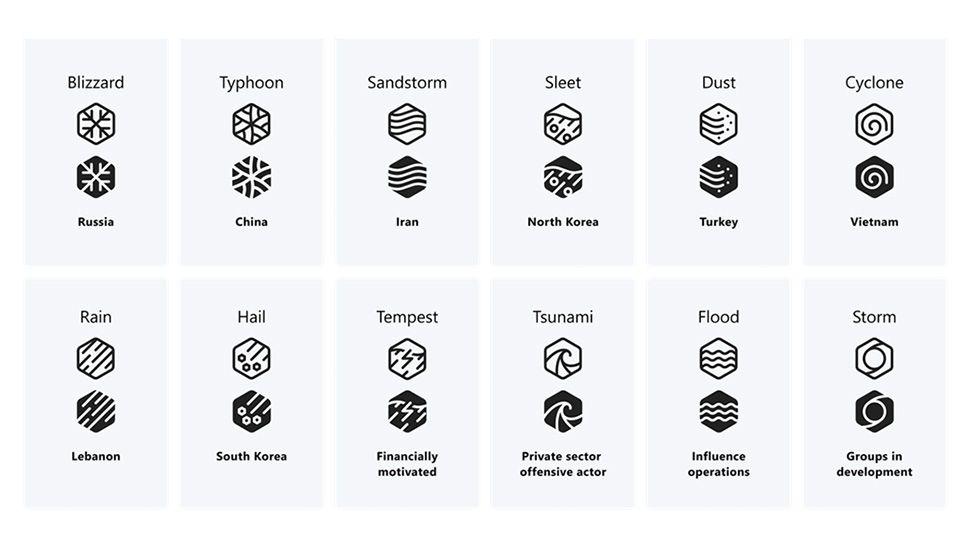
Microsoft is banking on our human obsession with the climate to assist make figuring out safety threats simpler with a shakeup (opens in new tab) to its taxonomy.
As of April 2023, Microsoft will now be utilizing climate occasions to assist establish threats throughout 5 key teams, together with financially motivated, non-public sector offensive actors (PSOAs), affect operations, teams in growth, and at last nation states.
The corporate hopes that simplifying its naming construction will make it simpler for purchasers and professionals to shortly establish a safety menace and what it’d entail with out having to delve deep into the literature.
Microsoft’s weather-based menace taxonomy
Nation state-based threats will embrace Storm (China), Sandstorm (Iran), Rain (Lebanon), Sleet (North Korea), Blizzard (Russia), Hail (South Korea), Mud (Turkey), and Cyclone (Vietnam), with every gaining an adjective suffix to indicate actor teams. Every climate occasion is accompanied with its personal icon, making it simple to visually establish a rustic, too.
Beforehand known as PHOSPHORUS, the Iranian menace actor shall now be generally known as Mint Sandstorm, which Microsoft says immediately signifies the nation of origin and potential related threats.
The ultimate revisions embrace Tempest (financially motivated), Tsunami (PSOAs), Flood (affect operations), and Storm (teams in growth) which is used for “newly found, unknown, or rising cluster of menace exercise.”
Storm threats will probably be assigned a sequence of numbers (Storm-####) forward of correct categorization later down the road as extra data surfaces.
At the moment, Microsoft tracks over 300 distinctive menace actors, together with 160 nation-state actors and 50 ransomware teams.
Microsoft Menace Intelligence Company VP John Lambert defined that the earlier naming strategy (Components, Timber, Volcanoes, and DEVs) has been retired and that each one present menace actors have been reassigned names, mentioning to a blog post (opens in new tab) to assist get rid of confusion throughout the transition interval.
